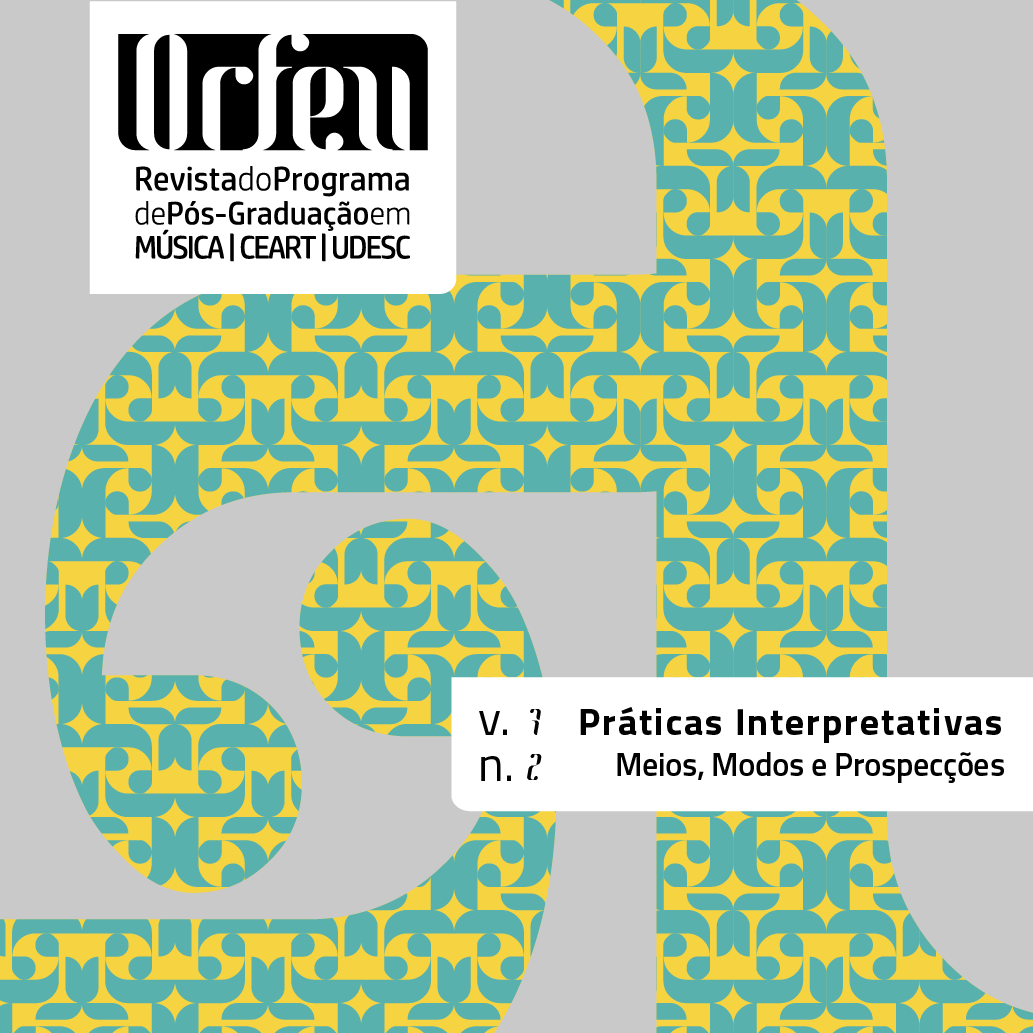Formal theory of generalized tonal functions
DOI:
https://doi.org/10.5965/2525530407022022e0401Keywords:
generalized tonal functions, David Lewin, transformational theory, musical analysis, Hugo RiemannAbstract
Translation of the seminal article A Formal Theory of Generalized Tonal Functions by David Lewin, published in 1982, which foreshadows some ideas later developed in Generalized Musical Intervals and Transformations (LEWIN, 1987) and which would give rise to transformational theory and neo-Riemanian theory. The author builds, through mathematical formalization, a structure called the Riemann System, which generalizes certain concepts pertinent to the theory of tonal music, such as harmonic function and melodic function. Transformations that relate Riemann Systems to each other are also conceptualized, embracing and extending the scope of traditional Riemannian transformations. Such transformations can be interpreted as corresponding to other familiar theoretical notions, such as transposition, inversion, “taking the relative”, the “taking the mediant”, among others. Some short analyzes of excerpts from Wagner, Brahms, Stravinsky and Beethoven are elaborated in order to show the relevance of the theory developed for musical analysis.
Downloads
References
BORETZ, Benjamin. “Musical Syntax (II)”. Perspectives of New Music, v.10, n.1, 1971.
FORTE, Allen. The Structure of Atonal Music. New Haven e Londres: Yale University Press, 1973.
HAUPTMANN, Moritz. Die Natur der Harmonik und der Metrik. Leipzig: Breitkopf und Haertel, 1853.
MICKELSEN, William C. _Hugo Riemann’s Theory of Harmony_. Lincoln and London: University of Nebraska Press, 1977.e
MISCH, Ludwig. Alla danza tedesca. Beethoven Studies, trans. G. I. C. DeCourcy. Norman: University of Oklahoma Press, 1953.
OETTINGEN, Artur von. Harmoniesystem in dualer Entwicklung Leipzig: W. Glaser, 1866.
HINDEMITH, Paul. The Craft of Musical Composition, trad. Arthur Mendel. London: Associated Music Publishers, 1942.
RAMEAU, Jean-Phillipe. Traité de l’harmonie réduite à ses príncipes naturels. Paris: Ballard, 1722.
RAMEAU, Jean-Phillipe. Nouveu système de musique théorique et pratique. Paris: Ballard, 1726.
RAMEAU, Jean-Phillipe. Generátion harmonique. Paris: Prault, 1737. RAMEAU, Jean-Phillipe. Démonstration du principe de l’harmonie. Paris: Durand, 1750.
WESTERGAARD, Peter. An Introduction to Tonal Theory. Nova Iorque: W. W. Norton & Company, Inc., 1975.
ZARLINO, Gioseffo. Le Institutioni Harmoniche. 3. ed. Veneza: Senese, 1573.
Referências da introdução
COHN, R. Lewin, David. Grove Music Online, 20 jan. 2001 (atualização em 27 ago. 2003). Disponível em: https://doi.org/10.1093/gmo/9781561592630.article.47754. Acesso em: 13 abr. 2022.
LEWIN, D. Behind the Beyond: A Response to Edward T. Cone. Perspectives of New Music, Vol. 7, nº 2, p. 59-65. Seattle: Perspectives of New Music, 1969.
LEWIN, D. Music Theory, Phenomenology, and Modes of Perception. Music Perception: An Interdisciplinary Hournal Vol. 3, nº 4, p. 327-392. Oakland: University of California Press, 1986.
LEWIN, D. Musical Form and Transformation: Four Analytic Essays. New York: Oxford University Press, 1993.
LEWIN, D. Generalized Musical Intervals and Transformations, 2ª ed. New York: Oxford University Press, 2007. 288 p.
Published
How to Cite
Issue
Section
License
Copyright (c) 2022 Felipe Defensor Martins

This work is licensed under a Creative Commons Attribution 4.0 International License.
Authors who submit their manuscripts to be published in this journal agree to the following terms:
1. Authors retain the copyright and grant to the journal the right of first publication, whilst simultaneously permitting their work to be licensed under the Creative Commons License Attribution, which allows the sharing of work with recognition of the authorship and initial publication in this journal.
2. Contributions in this journal are open access; this means they are based in free use, and non-commercial applications.






